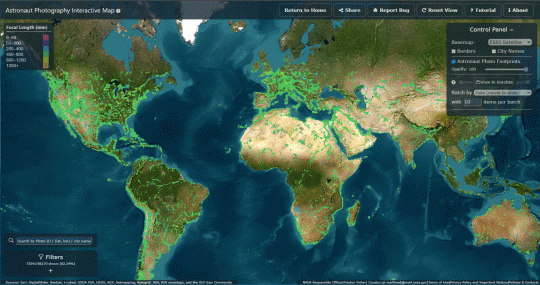ISS061-E-6413
| NASA Photo ID | ISS061-E-6413 |
| Focal Length | 500mm |
| Date taken | 2019.10.15 |
| Time taken | 08:52:51 GMT |
Country or Geographic Name: | ITALY |
Features: | MAIELLA, APENNINE MOUNTAINS |
| Features Found Using Machine Learning: | |
Cloud Cover Percentage: | 10 (1-10)% |
Sun Elevation Angle: | 32° |
Sun Azimuth: | 135° |
Camera: | Nikon D5 Electronic Still Camera |
Focal Length: | 500mm |
Camera Tilt: | High Oblique |
Format: | 5568E: 5568 x 3712 pixel CMOS sensor, 35.9 x 23.9 mm, total pixels: 21.33 million, Nikon FX format |
Film Exposure: | |
| Additional Information | |
| Width | Height | Annotated | Cropped | Purpose | Links |
|---|---|---|---|---|---|
| 720 pixels | 480 pixels | Yes | Yes | NASA's Earth Observatory web site | Download Image |
| 5568 pixels | 3712 pixels | No | No | Download Image | |
| 640 pixels | 427 pixels | No | No | Download Image |
An astronaut on the International Space Station took this oblique photograph of the Maiella Massif, which stands amidst Italy's Central Apennine Mountains. Located just 40 kilometers (25 miles) from the Adriatic Sea coastline, the Maiella Massif abruptly rises more 2700 meters (9000 feet) above sea level. Shadows and the oblique viewing angle give a strong three-dimensional sense to the steep, blocky cliffs and the dendritic drainage channels leading to the coast.
Complicated tectonics elevated the Maiella Massif from rock layers that were originally deposited at the bottom of the sea between 23 and 100 million years ago. The highest peak of the massif, Monte Amaro, is made of a light-colored limestone. Below the noticeably bare high plains, the tree line cuts across steep slopes. Since the photo was shot during local autumn, the tree line has a dark, reddish hue of fall color.
The massif is a geologic formation called an anticline, an arch-like structure of folded rock layers that can trap petroleum. Maiella was important to Italy's oil industry in the 19th and 20th centuries, though far fewer exploration wells have been drilled there in recent years.
In 1991, Maiella National Park (//www.parks.it/parco.nazionale.majella/Eindex.php) was created to preserve the area's unique biodiversity and archaeological significance in the Apennines.
References
Rustichelli, A. (2010, March) Mechanical Stratigraphy of Carbonate Rocks: Examples from the Maiella Mountain (Central Italy) and the Granada Basin (Southern Spain). Accessed February 7, 2020.




